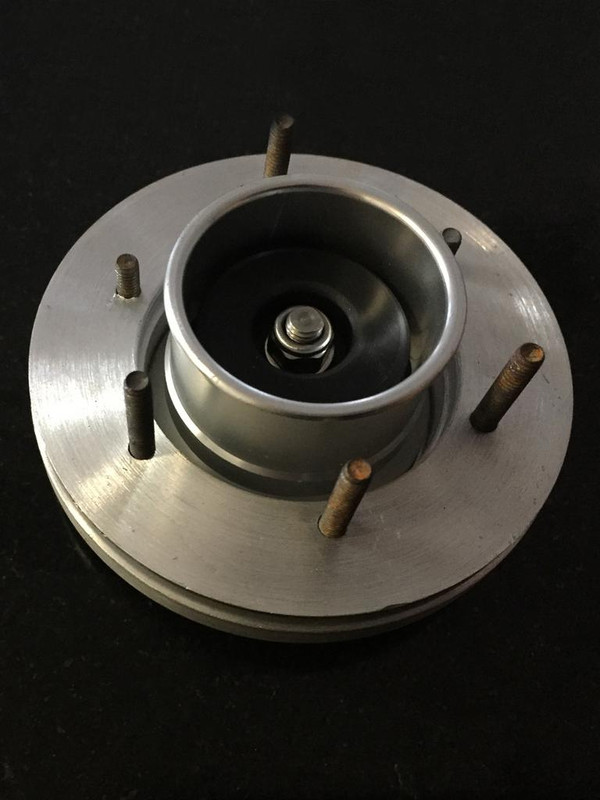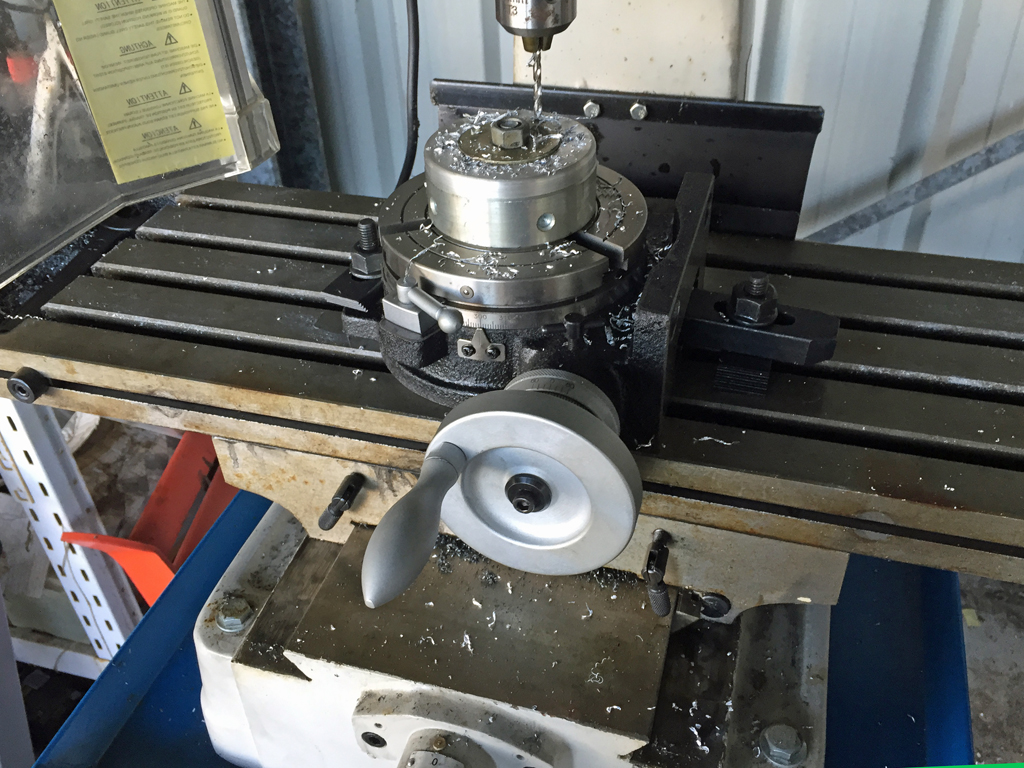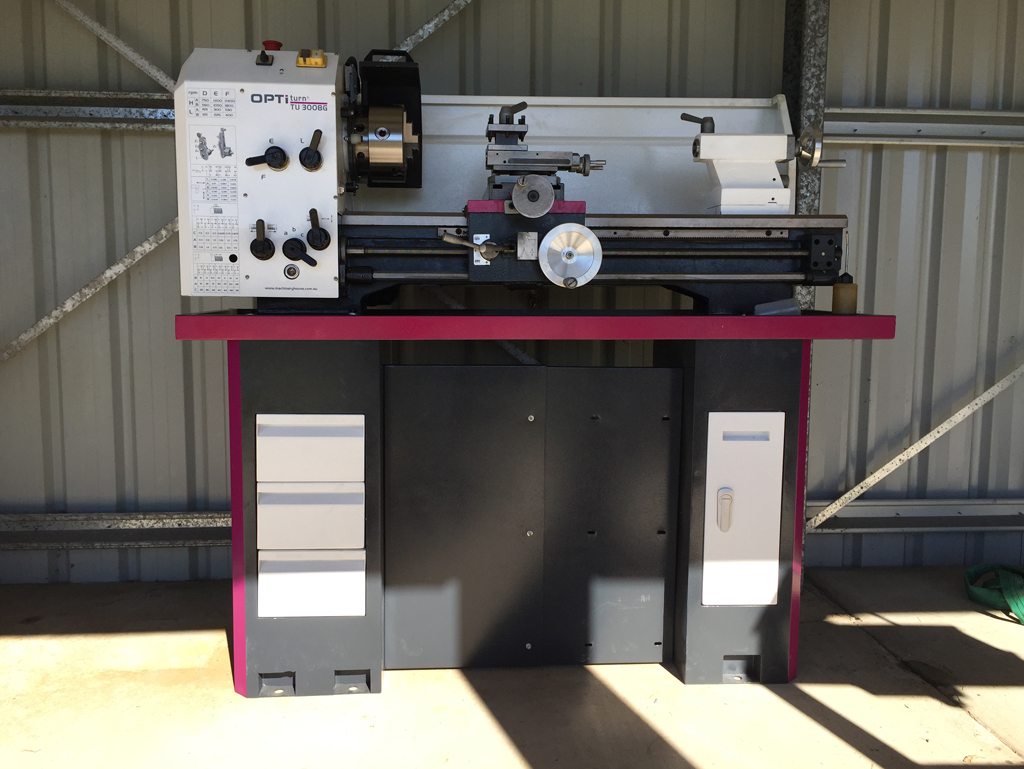Probably. Feels nice though.Rong fu?
Mills and Lathes
- Thread starter link1896
- Start date
link1896
Mr Greenfield
Nothing wrong with rong fu for non production work. I bolted mine to the floor and to the wall, cut vibrations down by 90%. I turned up in the lathe a piece of wood just bigger then my RF-25’s post’s ID, and belted it in with a sledgehammer. Then bolted to that. Super stable.
Ackland
chats d'élevage
Have you lads tried turning out end caps for boost hub conversions?
Got a set of tune Prince and Princess hubs that I really really don't want to sell off (mainly because suddenly "old standard" gear isn't worth anything..
I've got some of the spacer shims on order but it struck me that specific caps shouldn't be too hard.
Got a set of tune Prince and Princess hubs that I really really don't want to sell off (mainly because suddenly "old standard" gear isn't worth anything..
I've got some of the spacer shims on order but it struck me that specific caps shouldn't be too hard.
Should be easy enough. @stoo has made some impressive adaptery things. Mostly drawer runners for @moorey collection of Orange filing cabinets.Have you lads tried turning out end caps for boost hub conversions?
Got a set of tune Prince and Princess hubs that I really really don't want to sell off (mainly because suddenly "old standard" gear isn't worth anything..
I've got some of the spacer shims on order but it struck me that specific caps shouldn't be too hard.
It will get bolted down. The rack on the left has some steel and bits in it and that is swapping places with a set of full width / height shelving in the next bay. That gives me some room behind as the shelving isnt as deep and also lets me steal some space on the right for when a bigger lathe comes along. Will look out for a rotary table and indexing head.Nothing wrong with rong fu for non production work. I bolted mine to the floor and to the wall, cut vibrations down by 90%. I turned up in the lathe a piece of wood just bigger then my RF-25’s post’s ID, and belted it in with a sledgehammer. Then bolted to that. Super stable.
Had to make up some spacer/compensating rings. Paid job no less! Anyway it was very fiddly with minimal clearances so I bought a rotary table. Just a 150mm Hare and Forbes job. I would have like to go 200mm or bigger but the cost just skyrockets. Still need to get some indexing plates and a tail stock but so far so good. Man it is nice to be able to trust the graduations on the handwheels and know you will get back to the same place. Mark one hole and the rest drill where the dials say to.

These cap headed screws were just to test, the holes are chamfered so that is what will go in when it is fitted.

M4 screws in 4.2 holes. No idea why I had a 4.2mm drill. Anyway it will do. Pre deburring.

I thought my clamps would fit the rotary table T slots but no too bloody big. Bit of stuffing around and a sway bar washer was close enough to the right size and an M12 bolt fitted up the centre. Used a centre drill to spot the holes then drilled out with the 4.2. MT2 in the centre so I can also fit a chuck in there. Laterer.

These cap headed screws were just to test, the holes are chamfered so that is what will go in when it is fitted.

M4 screws in 4.2 holes. No idea why I had a 4.2mm drill. Anyway it will do. Pre deburring.

I thought my clamps would fit the rotary table T slots but no too bloody big. Bit of stuffing around and a sway bar washer was close enough to the right size and an M12 bolt fitted up the centre. Used a centre drill to spot the holes then drilled out with the 4.2. MT2 in the centre so I can also fit a chuck in there. Laterer.
cokeonspecialtwodollars
Fartes of Portingale
Isn't 4.2mm the recommended drill size for an M5 tap?
Maybe. Didnt check, sounds right. Did not check, seems odd I have the right drill...Isn't 4.2mm the recommended drill size for an M5 tap?
link1896
Mr Greenfield
Metric thread, “tapping drill bits”, as in drill bits used to size the hole correctly before using a thread tap to cut new threads, are calculated as follows
Male major thread - thread pitch = tapping drill bit diameter.
4.2 is for a m5 x 0.8
Once you go metric, imperial can go jam it’s 7/9th minus 1/64th of a bees dick bs
Ive spent a lot of time making and repairing 3 4 5 and 6mm threads in precision settings.

Male major thread - thread pitch = tapping drill bit diameter.
4.2 is for a m5 x 0.8
Once you go metric, imperial can go jam it’s 7/9th minus 1/64th of a bees dick bs
Ive spent a lot of time making and repairing 3 4 5 and 6mm threads in precision settings.

cokeonspecialtwodollars
Fartes of Portingale
My only exposure to this stuff is an electrical trade background (mining) and DIY tinkering, my understanding is that M5 x 0.8 thread pitch is the more common. So with this in mind ELI5 what is the purpose/benefit of M5 x 0.9 and M5 x 1.0 other than "new bottom bracket/wheel size/hub spacing" logic?
Practically none to be honest. The 1.0 will be a bit stronger than the 0.9 and both a bit stronger than 0.8 but in a 5mm bolt pretty irrelevant.
Nambra
Definitely should have gone to specsavers
How does that work Dales? Won’t a coarser thread mean a deeper cut for the bolt threads too, so you’re more prone to snapping the bolt head off when tightening as opposed to stripping threads for a fine pitch fastener?Practically none to be honest. The 1.0 will be a bit stronger than the 0.9 and both a bit stronger than 0.8 but in a 5mm bolt pretty irrelevant.
Core diameter is the same. Pitch varies so fewer threads thus effective width of thread is bigger so more meat. I know I thought it was counterintuitive at uni and our lecturer made us do the calculations. Surprised me. UNC is much stronger than UNF.How does that work Dales? Won’t a coarser thread mean a deeper cut for the bolt threads too, so you’re more prone to snapping the bolt head off when tightening as opposed to stripping threads for a fine pitch fastener?
Nambra
Definitely should have gone to specsavers
Thanks mate, I’m schooled now. I think I understand how the core diameter can stay the same, looking at the Wikipedia info on ISO metric threads.Core diameter is the same. Pitch varies so fewer threads thus effective width of thread is bigger so more meat. I know I thought it was counterintuitive at uni and our lecturer made us do the calculations. Surprised me. UNC is much stronger than UNF.
hifiandmtb
Sphincter beanie
Not a mill. Not a lathe.
But an Ozito drill press.
Don’t.
But an Ozito drill press.
Don’t.
Drills oval holes?Not a mill. Not a lathe.
But an Ozito drill press.
Don’t.
hifiandmtb
Sphincter beanie
What it does can't be written in words.
It's back in the box now, will be returned next week.
It's back in the box now, will be returned next week.
So a little porn. Last night I left the lathe sitting on the base but not lined up or level. The engine crane legs were just a tad too long to lift from the front. The manual conveniently showed the centre of mass for lathe alone and lathe and base so this morning I shifted the engine crane to the end and picked up the lathe from the neutral point, which wasn't but close enough. Kicked the base a bit and put the bolts in their holes and voila! I have a quick change toolpost to go on and will need to set final levels. A bee's dick of packing under the tail stock is needed to get the level making the noise in all directions.

So nothing overly flash or exciting but for a home workshop a pretty competent beast. Both axes driven and it will turn tapers and offset tapers. 320mm x 700mm is the capacity of the bed. Going to the next size up which has a bolt in section near the chuck added a lot of $ to the price and this was pretty much the limit of what I could justify. As it was all the old tooling and bits were useless and went with the old lathe. This takes 16mm tooling so will be much better. Need to pick up the 4 jaw chuck today (not standard for some weird reason but at least the chucks are camlock) and will grab a decent boring bar at the same time.

So nothing overly flash or exciting but for a home workshop a pretty competent beast. Both axes driven and it will turn tapers and offset tapers. 320mm x 700mm is the capacity of the bed. Going to the next size up which has a bolt in section near the chuck added a lot of $ to the price and this was pretty much the limit of what I could justify. As it was all the old tooling and bits were useless and went with the old lathe. This takes 16mm tooling so will be much better. Need to pick up the 4 jaw chuck today (not standard for some weird reason but at least the chucks are camlock) and will grab a decent boring bar at the same time.
cokeonspecialtwodollars
Fartes of Portingale
No but it requires good coffee before it operatesDoes it make good coffee?

